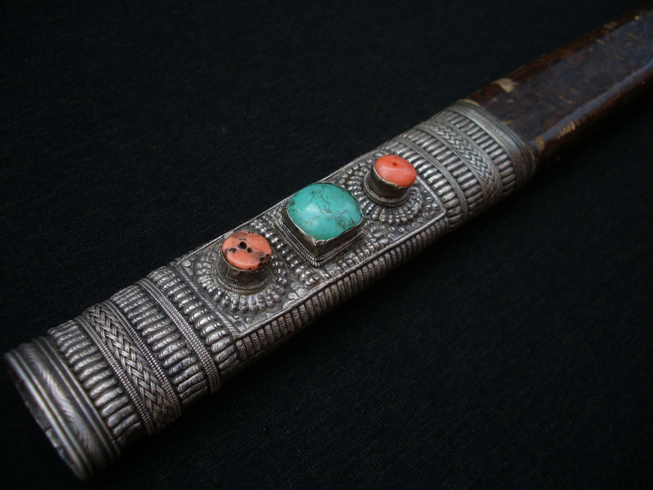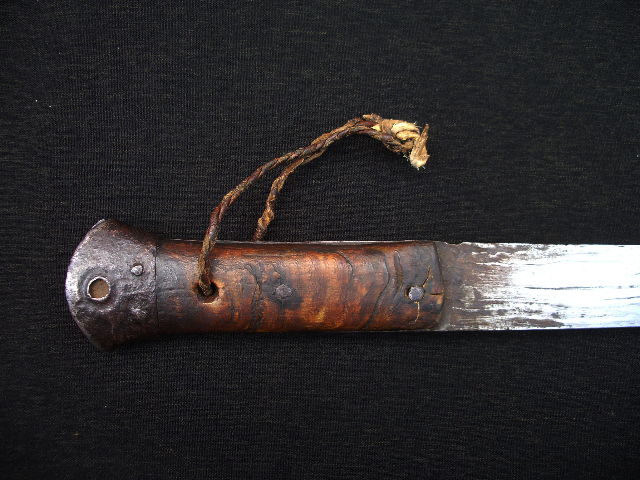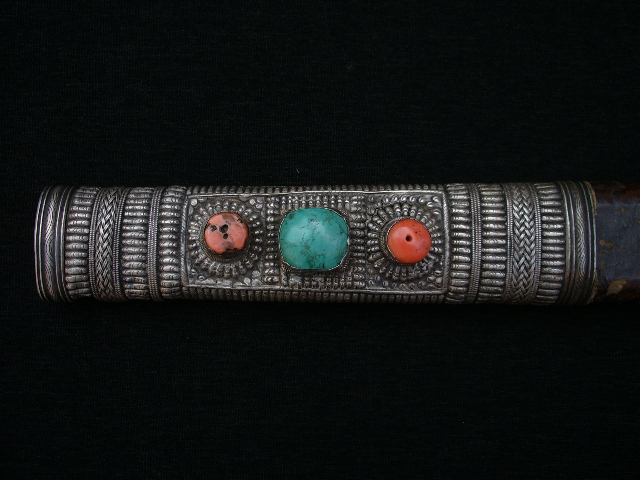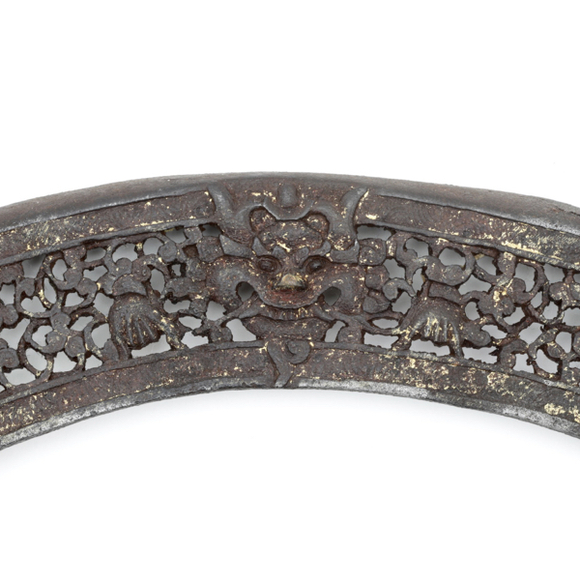With a rare, finely forged double hairpin blade.

86 cm
74 cm
660 grams
Iron, steel, horn, leather, wood, silver, coral, turquoise
Eastern Tibet or Sichuan
19th century
From a Beijing private collector
Description
Long and unusually high-quality blade, etched to accentuate the hairpin folding style that is so typical of this style of sword. The forging itself is more refined than is usually the case on Tibetan swords. Forging flaws are often common due to the fact that forges in the Himalayas couldn't attain the high heats of those situated in lower lands because of a lack of sufficient oxygen at these heights.
That this blade does not exhibit such flaws, nor the typical pockets generated by the use of straw-ash as flux but rather seems to be forged using borax introduced to Asia by the Dutch or Portuguese, may mean that the blade was made in a city outside of Tibet, but commissioned in Tibetan style, or otherwise made by an expert bladesmith in Tibet who managed to work around the challenges his geographical location posed.
Its scabbard is covered with onager skin, a wild Tibetan donkey known for its aggressiveness and the danger it posed to hunters because of its strong kicks. A prized hunting trophy in its day, it was used only on some of the best quality weapons. (A beautiful twist-core dpa'dam owned by befriended collectors in Beijing comes to mind.)
Today onagers are almost extinct and the leather has become unobtainable. The silver scabbard chape features delicate braid work in silver strips and is adorned with turquoise and coral. As Tibet is about as far from the sea as one could possibly get, coral was a prized possession there. The handle is made of two plates of an unidentified type of horn. Simple iron pommel, with a hole that probably once held a semi-precious stone or coral. Overall in excellent condition.










This kind of fine work is typical for Tibetan work of the 15th-16th centuries.
With a very fine Nepalese blade, but kard-like hilt and scabbard.






